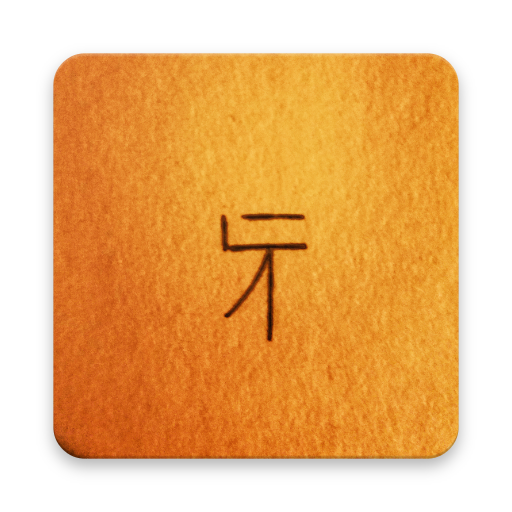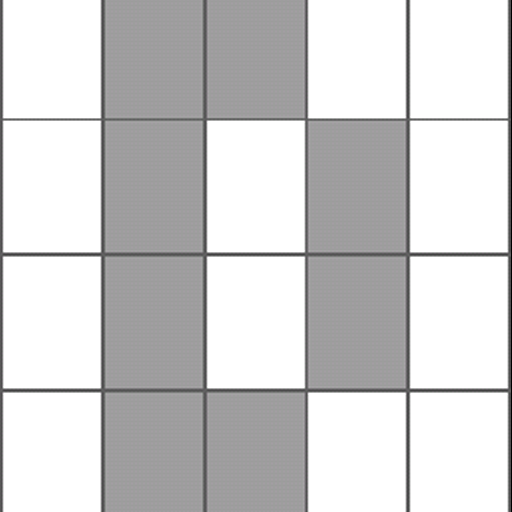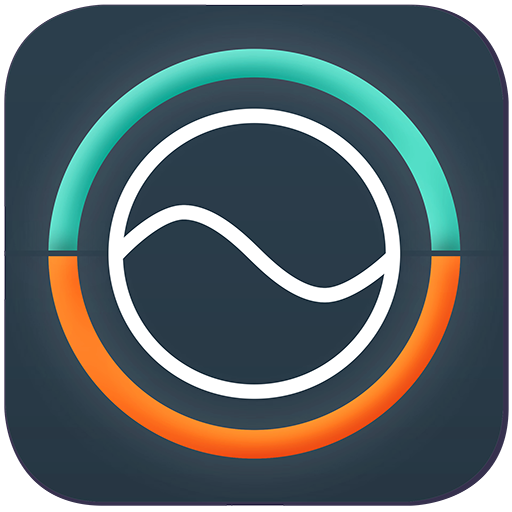

Fang Synth - Accelerometer control, arp, and seq
음악/오디오 | Akunull Systems
5억명 이상의 게이머가 신뢰하는 안드로이드 게임 플랫폼 BlueStacks으로 PC에서 플레이하세요.
Play Fang Synth - Accelerometer control, arp, and seq on PC
Fang is a synth app based on motion modulated control through accelerometer information. Each parameter can be linked to different directions of motion. Contains presets, wav recording, a stepped arpeggiator with diatonic scale locking, a multi-pattern sequencer, wave shaping oscillators, resonant filter with envelope and pitch locking, and an effects rig (including formant filter, pitched delay, reverb, down-sample, bit reduction.) Can be played by non synthesists as well: load presets and control sound through motion. Capable of strange sonic textures, complex evolving arpeggios, or classic synth sounds.
Full guide and video quick-start at thiiird.com/fang-guide
Control Pattern:
Each control has five sub-controls associated with it. The top, largest control is the main control and changes the actual value. The four controls beneath determine how much that value is changed by moving in each of the four directions. For an easier time understanding the concept, the video walk-through might be of help.
Notes are generated with a sequencer and keyboard.
The sequencer works by moving a step at the rate specified. There are four patterns that can be played and edited independently.
The keyboard has a set of notes that can be played or buttons which hold notes. Held notes can be cut off by sequencer notes of the same pitch.
The arpeggiator receives notes from the sequencer and keyboard. Its rate is controlled by both synced time and ms that are added together. It has variable steps, step transpose and gate. The steps and timing can be reset periodically with the optional arp reset. There is optional diatonic scale locking as well, allowing you to select a root note and scale from major, dorian, phyrygian, lydian, mixolydian, minor, and locrian.
The synth's sounds are generated with five voices, each with two oscillators that modulate between triangle and saw.
Modulation is effected by an envelope. There is a pitch envelope that effects both oscillators. The oscillators are capable of fm (osc B modifying osc A.) Both oscillators can have their signals sent to the filter or directly to the amp envelope. A white noise signal can also be added to the filter or directly to the amp envelope.
The filter is a 4 pole resonant band-pass whose frequency can follow the pitch. It is also effected by its own ADSR envelope. The filtered and unfiltered signal is sent to a per voice down sample and per voice delay under synth menu. All voices are sent to an effect rig with a formant (vowel) filter, pitched delay, reverb, and bit reduction.
File permission is for presets and WAV recording
Full guide and video quick-start at thiiird.com/fang-guide
Control Pattern:
Each control has five sub-controls associated with it. The top, largest control is the main control and changes the actual value. The four controls beneath determine how much that value is changed by moving in each of the four directions. For an easier time understanding the concept, the video walk-through might be of help.
Notes are generated with a sequencer and keyboard.
The sequencer works by moving a step at the rate specified. There are four patterns that can be played and edited independently.
The keyboard has a set of notes that can be played or buttons which hold notes. Held notes can be cut off by sequencer notes of the same pitch.
The arpeggiator receives notes from the sequencer and keyboard. Its rate is controlled by both synced time and ms that are added together. It has variable steps, step transpose and gate. The steps and timing can be reset periodically with the optional arp reset. There is optional diatonic scale locking as well, allowing you to select a root note and scale from major, dorian, phyrygian, lydian, mixolydian, minor, and locrian.
The synth's sounds are generated with five voices, each with two oscillators that modulate between triangle and saw.
Modulation is effected by an envelope. There is a pitch envelope that effects both oscillators. The oscillators are capable of fm (osc B modifying osc A.) Both oscillators can have their signals sent to the filter or directly to the amp envelope. A white noise signal can also be added to the filter or directly to the amp envelope.
The filter is a 4 pole resonant band-pass whose frequency can follow the pitch. It is also effected by its own ADSR envelope. The filtered and unfiltered signal is sent to a per voice down sample and per voice delay under synth menu. All voices are sent to an effect rig with a formant (vowel) filter, pitched delay, reverb, and bit reduction.
File permission is for presets and WAV recording
PC에서 Fang Synth - Accelerometer control, arp, and seq 플레이해보세요.
-
BlueStacks 다운로드하고 설치
-
Google Play 스토어에 로그인 하기(나중에 진행가능)
-
오른쪽 상단 코너에 Fang Synth - Accelerometer control, arp, and seq 검색
-
검색 결과 중 Fang Synth - Accelerometer control, arp, and seq 선택하여 설치
-
구글 로그인 진행(만약 2단계를 지나갔을 경우) 후 Fang Synth - Accelerometer control, arp, and seq 설치
-
메인 홈화면에서 Fang Synth - Accelerometer control, arp, and seq 선택하여 실행




